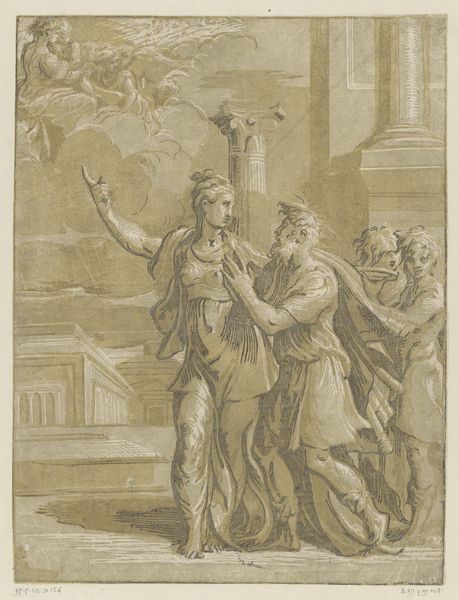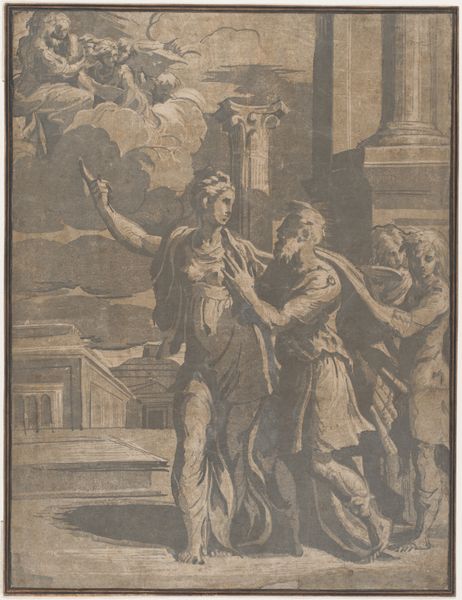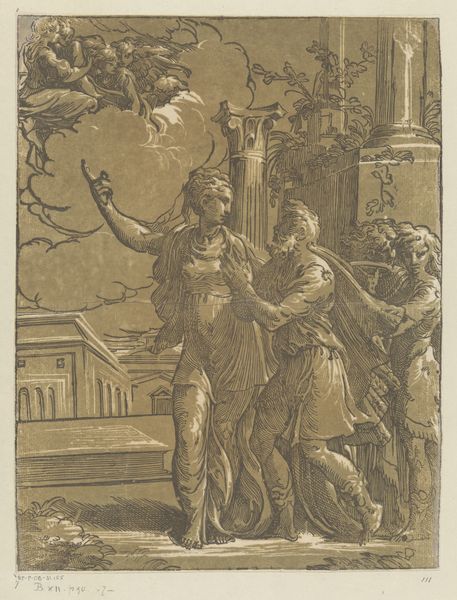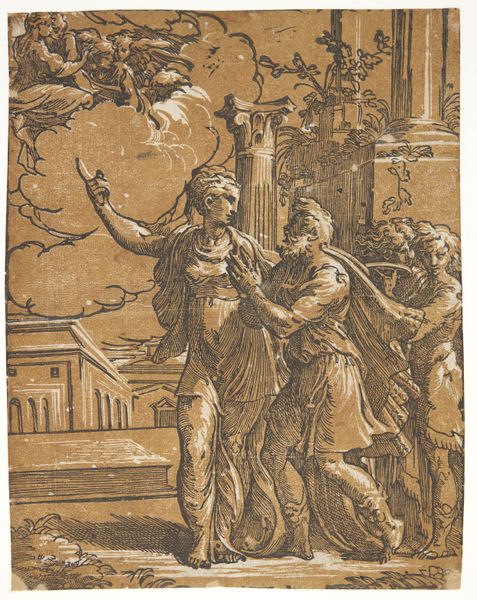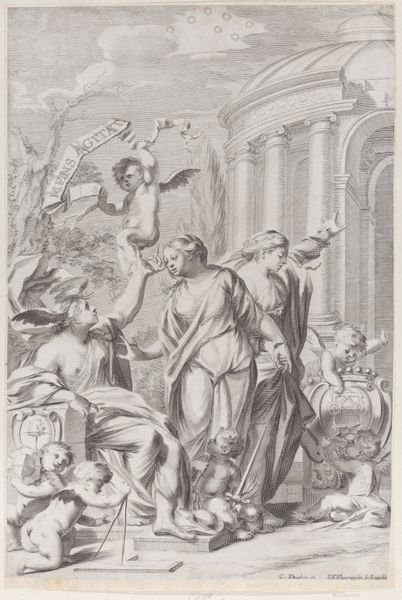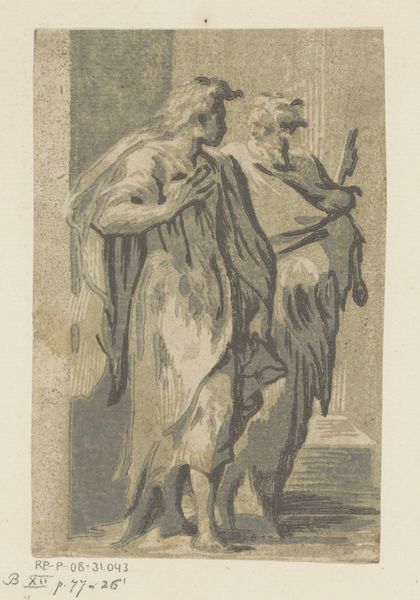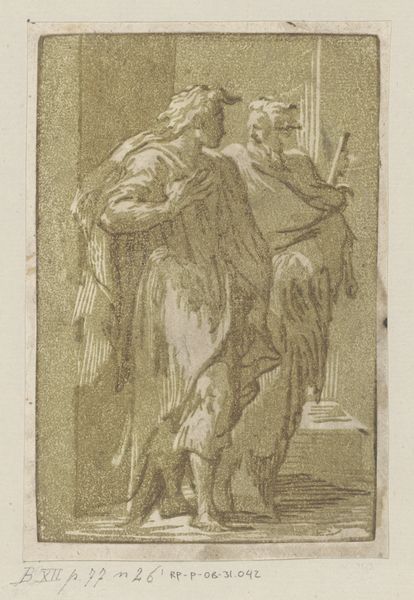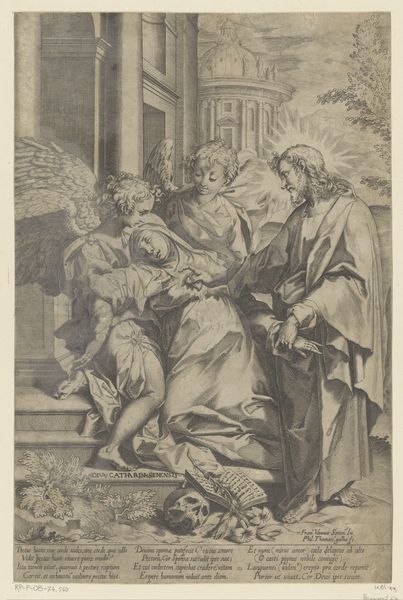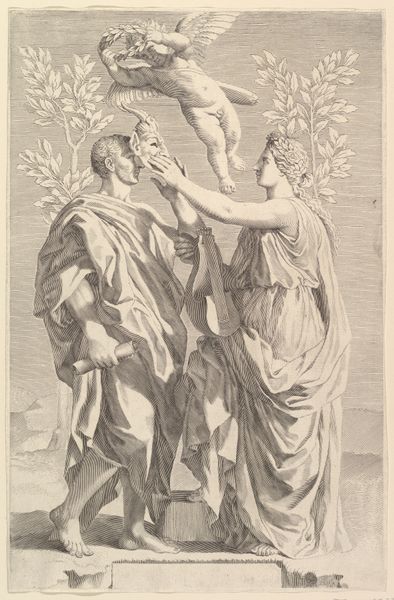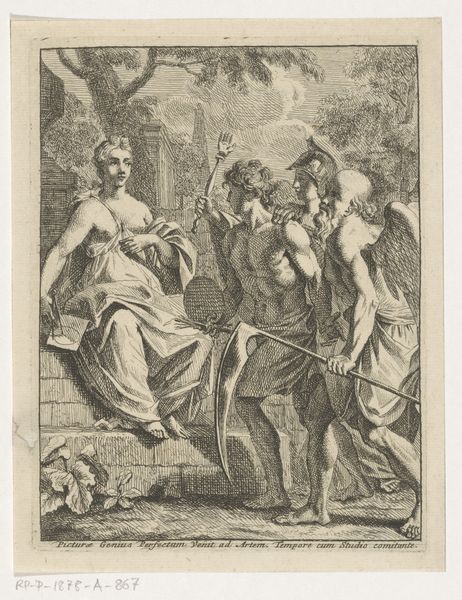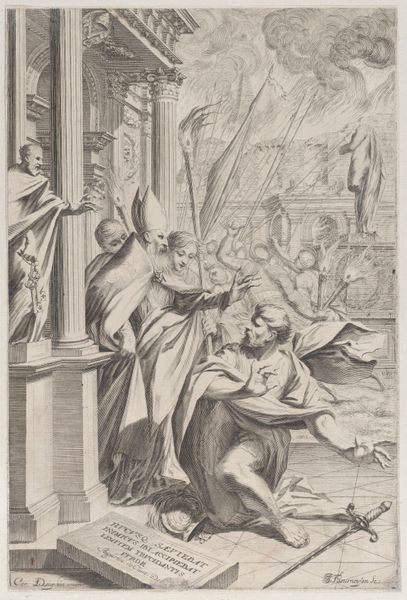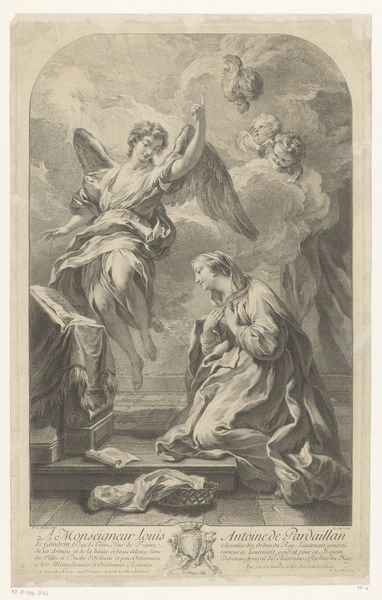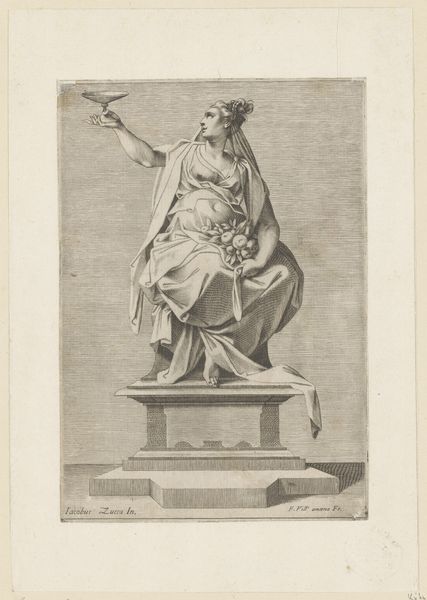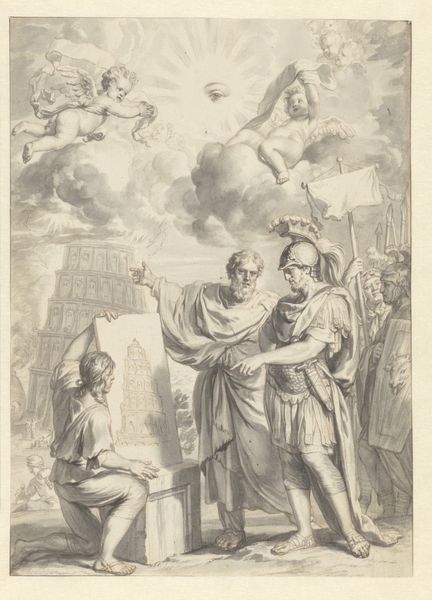
The Tirburtine Sibyl telling the Emperor Augustus of the coming in Christ, after Parmigianino 1530 - 1540
0:00
0:00
drawing, print, intaglio, ink, pen
#
portrait
#
drawing
# print
#
intaglio
#
figuration
#
11_renaissance
#
ink
#
coloured pencil
#
men
#
sketchbook drawing
#
pen
#
history-painting
Dimensions: Sheet: 13 9/16 × 10 1/4 in. (34.5 × 26 cm)
Copyright: Public Domain
Curator: Here we have a print, an intaglio likely rendered in ink, dating back to 1530-1540. The title is “The Tiburtine Sibyl telling the Emperor Augustus of the coming of Christ, after Parmigianino." Editor: The sepia tones lend an air of antiquity. The figures feel dynamic, caught mid-gesture, almost theatrical. Curator: Indeed. The print captures the legendary moment where the Tiburtine Sibyl prophesied the coming of Christ to Emperor Augustus, offering Christian validation of imperial rule. Its replication points to a very canny merging of religious and secular power. Editor: Absolutely. The Sibyl, with her arm raised, commands attention. She is clearly the focus; her gesture carries an enormous cultural weight as it is a key symbol bridging classical paganism with Christianity. I also notice the anxious gestures of Augustus and his retinue. They betray a vulnerability before this revelation. Curator: And consider the setting – the blend of classical architecture with landscape elements subtly underscores the meeting of different eras and belief systems, which were actively promoted in art during the Renaissance. This print then wasn’t just art, but political pronouncement in reproducible form. Editor: The visual language speaks volumes about the politics of its time, particularly about claiming a divinely sanctioned rule. But the slightly agitated expressions suggest a certain tension. It’s a powerful depiction of authority confronted by something greater. The visual narrative emphasizes faith as being a force in public life. Curator: I agree. Its circulation served as a testament to how religious prophecy could reinforce contemporary social and political frameworks. Prints such as this reveal how artworks participated actively in constructing and disseminating ideology. Editor: And by re-interpreting visual languages of the antique world. Well, thinking about it again, for me the lasting power of the image comes from the subtle tension. It reveals the transformation of belief. Curator: Exactly, these visual records tell us so much about our history and our understanding. Editor: Yes, it really makes you consider the visual symbols that still inform much of today’s politics.
Comments
No comments
Be the first to comment and join the conversation on the ultimate creative platform.
